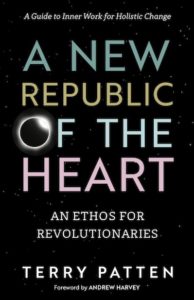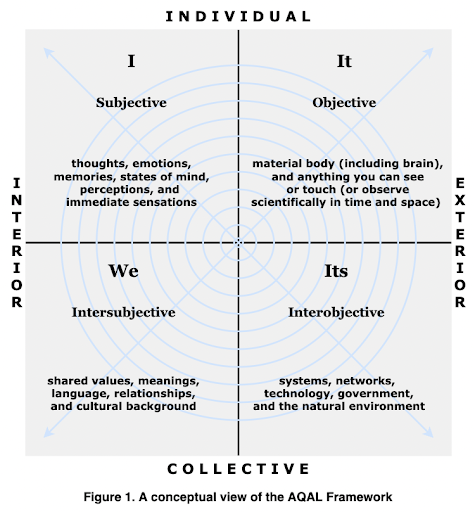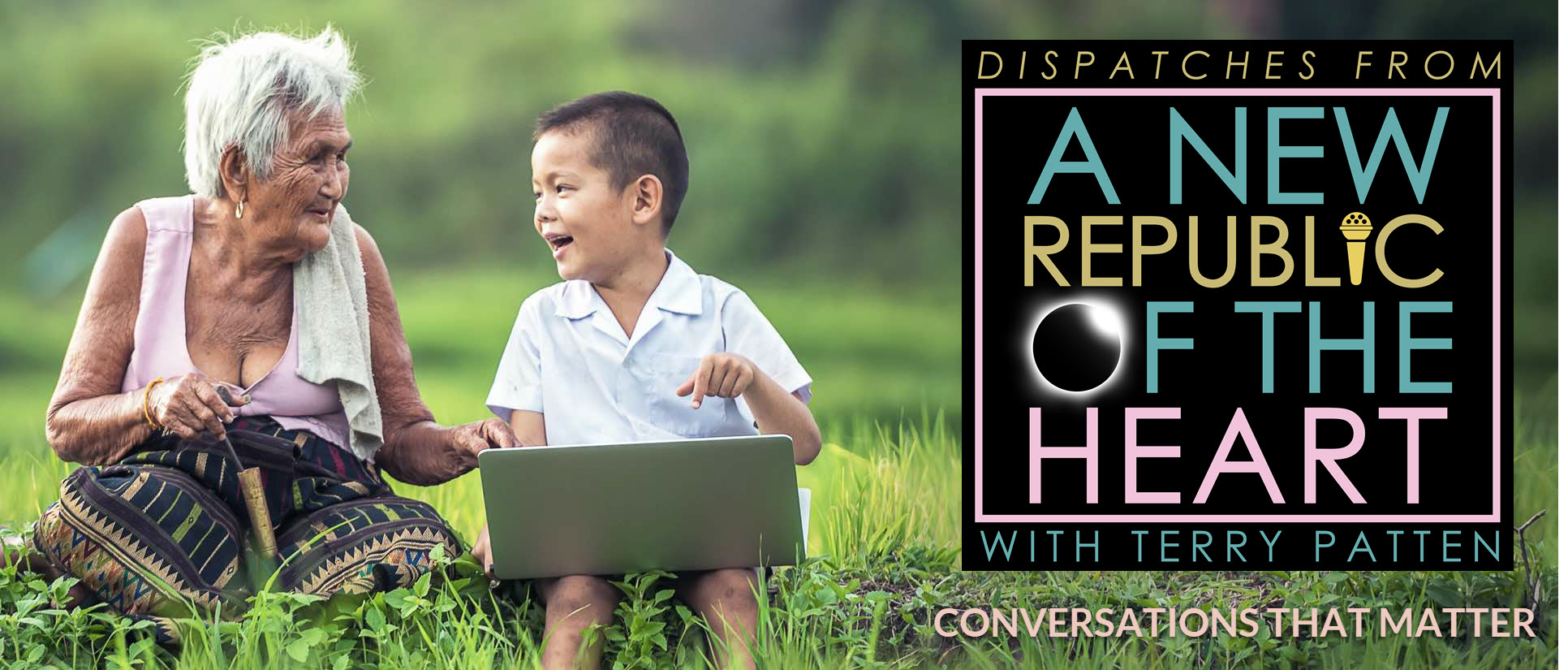Have a listen»
Posts in the Quote Series
0: Introduction: What’s Really Happening
2.1 Gratitude, Grief, Good and Evil
2.2 Activism - The Highest Calling of our Character
4.1 More Than Darwin's The Origin of Species
4.2 Bending the Arc of Evolution
5.1 The Integral Perspective: Altitudes and Attitudes
5.2 Understanding our Multidimensional Reality through the Four Quadrants
Setting the Context
On September 23rd of 2019, delegates of the 193 member states of the United Nations assembled for a session of the United Nations Climate Change Summit, unaware that they were about to hear a speech unlike any they had heard before. It lasted only 4 1/2 minutes but was a thorough, stinging condemnation, not only of the delegate nations, but of an entire generation of leaders.
Citing the key findings of the UN’s own creation – the Intergovernmental Panel on Climate Change (IPCC) – the speaker called them out for allowing critical thresholds to be breached, bringing the biosphere to the brink of collapse.
The delegates were so moved by this sincere and passionate expression of outrage that they burst into thunderous applause. You might have guessed that the speaker was an eminent climate scientist, but you would have been wrong. The speech was delivered by a 15 year old Swedish girl, Greta Thunberg.
It didn’t take a climate scientist to understand that we were in deep trouble. It took a child, born into a world so carelessly mishandled, to feel and express the outrage that this alarming condition had been allowed to develop.
Greta’s speech was only one of many individual acts that have burst into our awareness and left ripples in their wakes. The following example reminds us that history has also recorded instances of large groups acting as one, leaving the experts flat footed, scrambling to explain why they had been so wrong with their predictions.
When Russia invaded Ukraine on February 26th in 2022, the “smart money” was betting on a rapid sweep of Ukrainian territory and installation of a puppet government within weeks. What could possibly go wrong?
Russia had overwhelming military might and had been planning the invasion of its small neighbor for years. Six months later, Ukraine was chasing the Russian army back to its borders. Russian soldiers were defecting and abandoning their tanks and encampments.
It has been heartwarming to witness the spirit of the Ukrainian people in the face of such overwhelming odds. The experts were flat wrong. They did not factor in the power of the courage, cohesiveness and determination of the Ukrainian people, nor ineffectual performance of the Russians.
It is fitting to simply attribute these surprising outcomes to “the human spirit,” but that analysis only scratches the surface of how these infusions of energy can dramatically shift the dangerous trajectories we may be on.
In this post, Terry introduces us to a framework that provides us with a more comprehensive way of understanding the far reaching potential of the beating human heart – or a chorus of beating hearts – to defy the odds.
That framework is Ken Wilber’s “Four Quadrants,” a basic depiction of which we’ve included below. We are the Voices Blog Team. Please read on as Terry Patten leads us through a description of how these four quadrants point us toward a more effective way of looking at and interacting with our world.
Selected Readings From A New Republic of the Heart
Recitations by Anneke Edson, David Chasteen, Sallie Justice, Phil Justice, and Ed Prell
Chapter 5: The Integral Revolution – Part Two
CHAPTER OVERVIEW: (Pg 11)
Chapter Five introduces an integral way of understanding our multidimensional reality, appreciating how all human perspectives are partial views of a larger truth. Beyond the cognitive, emotional, and spiritual limitations of our typical fragmented thinking are more holistic perspectives that offer a basis for a “radical integral ecology.”
THREE COMPETING WORLDVIEWS AND FOUR QUADRANTS (pg 110)
(pg 111) The modern rational worldview is the lingua franca of the kind of serious scholarship and discourse that gave rise to integral philosophy. Wilber created his four-quadrant map of human knowledge by starting with the disciplines found in any modern university—for example, biology, physics, psychology, archaeology, literature, government, anthropology, and engineering. Wilber notes that each describes evolution moving through progressive stages or waves—but in entirely different terms.
(pg 111) Physics, chemistry, and biology focus on and measure different aspects of “exterior” material reality and derive understandings of the laws that govern the physiology and behavior of individual atoms, molecules, stars, galaxies, planets, and organisms. Psychotherapy, spirituality, art, and literature focus on the interior reality of individual human beings.
(pg 111) Systems sciences, including much of economics and ecology, focus on understanding the dynamics of the collective exterior behaviors of people or of living or nonliving systems. Ethics and many social sciences focus on understanding the agreements that structure the interior lives of groups.
(pg 111) Just two fundamental distinctions—between interiors and exteriors, and between individuals and collectives —delineate these four domains. Each represents a fundamental dimension of reality, where we can see the evolution of intentions and values (interiors of individuals), of behavior (exteriors of individuals), of culture (interiors of collectives), and of systems (exteriors of collectives).
(pg 111) Taken together, these four quadrants account for the relationship between the different dimensions of reality and areas of knowledge. This schema brings to light the unique and necessary perspective that each offers, and suggests that all four domains are needed to understand any important situation and to design adequate solutions.
(pg 113) Integralists understand that it is not possible to engage productively with the human predicament without accounting for these multiple dimensions of reality—all quadrants and all perspectives. And that means engaging with the hopes, needs, and desires of human beings who hold different worldviews and identities, and who speak different languages, and whose thinking emerges from different disciplines. We need to understand each perspective more fully—realizing that they each live in us.
(pg 113) Our own unconscious desire to distance ourselves from elements of earlier worldviews creates blind spots, or shadows, that often make connection and creativity nearly impossible.
(pg 113) Human consciousness first emerged among people preoccupied with survival and focused on meeting very basic needs, expressing archaic consciousness. We matured into an ancient tribal magical consciousness, which was probably our first semi-coherent worldview.
(pg 113) Out of that consciousness, the power gods prevailed, and the might-makes-right warrior consciousness of our earliest kingdom societies emerged. These are the stages previous to the “traditional” consciousness described below.
(pg 113) All these worldviews still hold sway over many individuals —and recently we have seen numerous examples on the world stage, where the “might makes right” position has waxed resurgent—even though, in the broader view, these forms of consciousness have waned in influence over the last five thousand years.
(pg 113 & 114) Now we will delve more deeply into the three major worldviews that dominate most of our world today, and explore the characteristics of individuals who most strongly hold each of these worldviews.
(pg 113 & 114) A caveat is in order here: In real life, very few people express any of these worldviews in an entirely pure form. Most of us express a hybrid. But because the structures we are discussing are enormously powerful, we will take the liberty of talking about them using broad generalizations, because doing so illuminates even more than it obscures.
Summary & Preview of What is Next
Using our newfound understanding of the Four Quadrants, we are better equipped to effectively think through the challenging issues that face us today and reach more comprehensive understandings of them and find more effective answers for them.
Take climate change for example. When considering the question “What are the effects of climate change” through the multifaceted lens of the four quadrants, we are able to extend the range of our responses, thus expanding and enriching the set of considerations employed to address climate change.
For example:
The upper left quadrant (UL) considers a person’s thoughts and emotions. When exposed to actual changing climate conditions, and persuasion or analysis by others, a person may react by either believing or denying climate change and their mindset guides them toward action or into passivity.
The upper right quadrant (UR) is concerned with the physical condition and actions of individuals. As our climate veers away from the favorable state humans have enjoyed for the past 12,000 years, people will struggle to maintain their health and vitality. They will also be vulnerable to the hazards of increasingly violent weather extremes.
The lower left quadrant (LL) relates to the shared interior values and perspectives that define a culture. Many cultures are now conflicted, torn between the recognition or denial of climate change because recognition forces commitment to unpopular and inconvenient actions and denial becomes increasingly delusional and untenable.
The lower right quadrant (LR) considers systems and the materialization of our collective actions within them. As we respond to the changing climate – through the hardening of our infrastructures in place or by making an exodus to build new settlements – we attempt to create environments that are suitable for human survival in this ever-changing landscape.
Keeping all perspectives from the four quadrants in mind – rather than looking at situations from only one or two – we can identify a broader spectrum of individual and cultural points of view and, therefore, set the stage for more mature, cooperative, and resourceful decision makers to arrive at wholistic solutions that will greatly increase our chances for success and survival.
In the next part of Chapter 5, Terry Patten drills down on the differing worldviews at play on the world stage today, and the need for all of us to work together.



